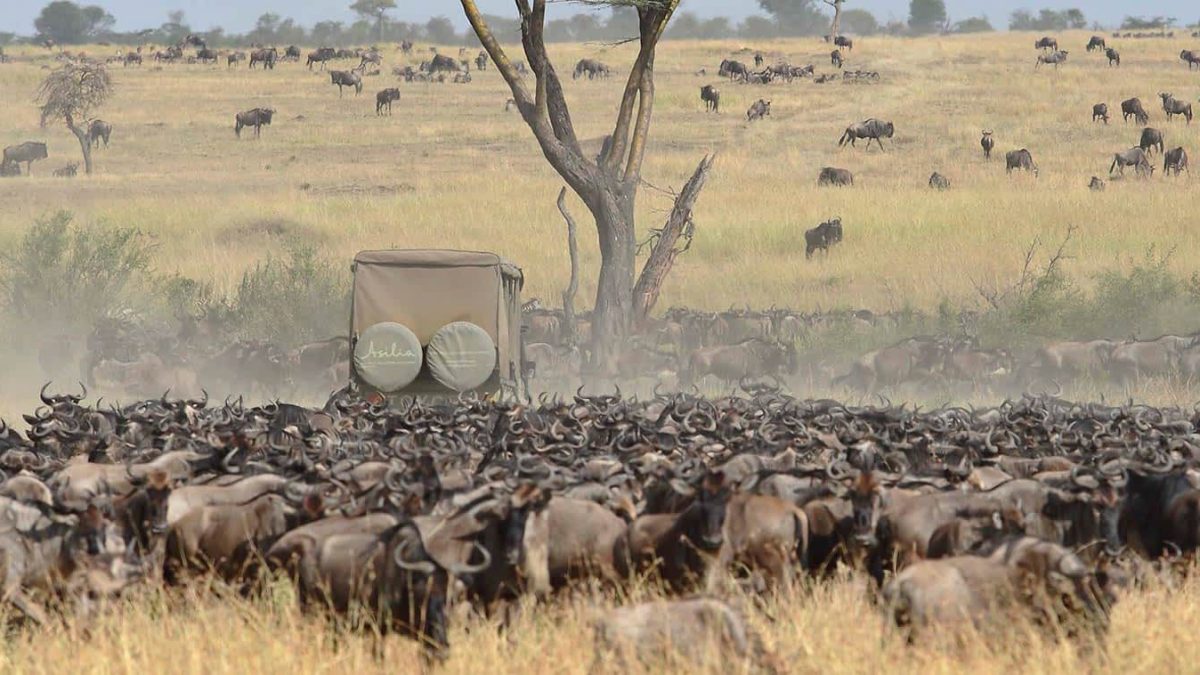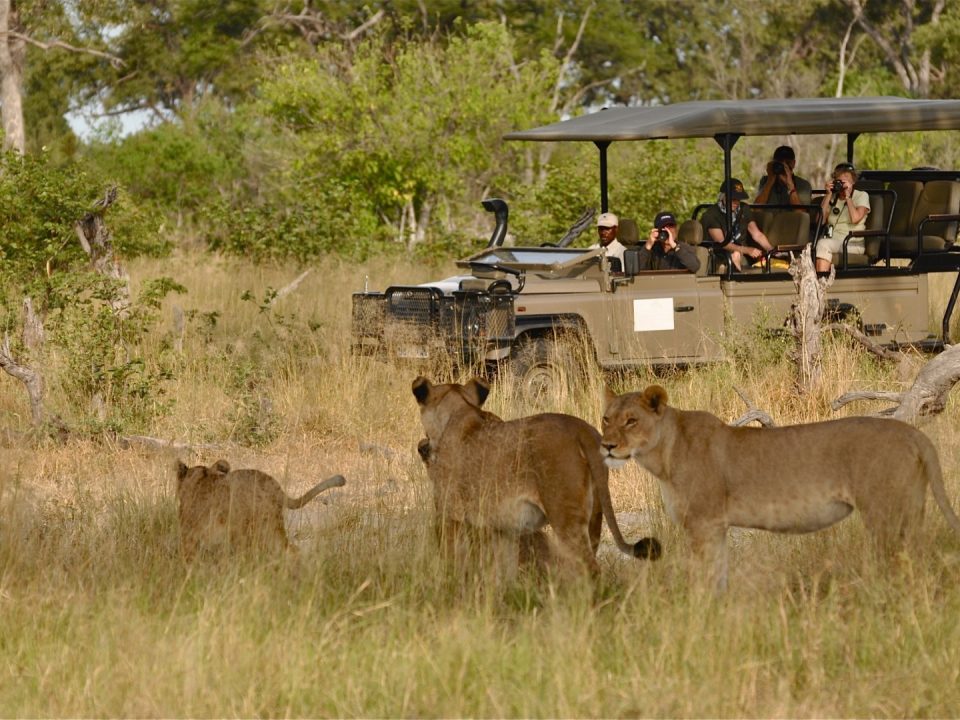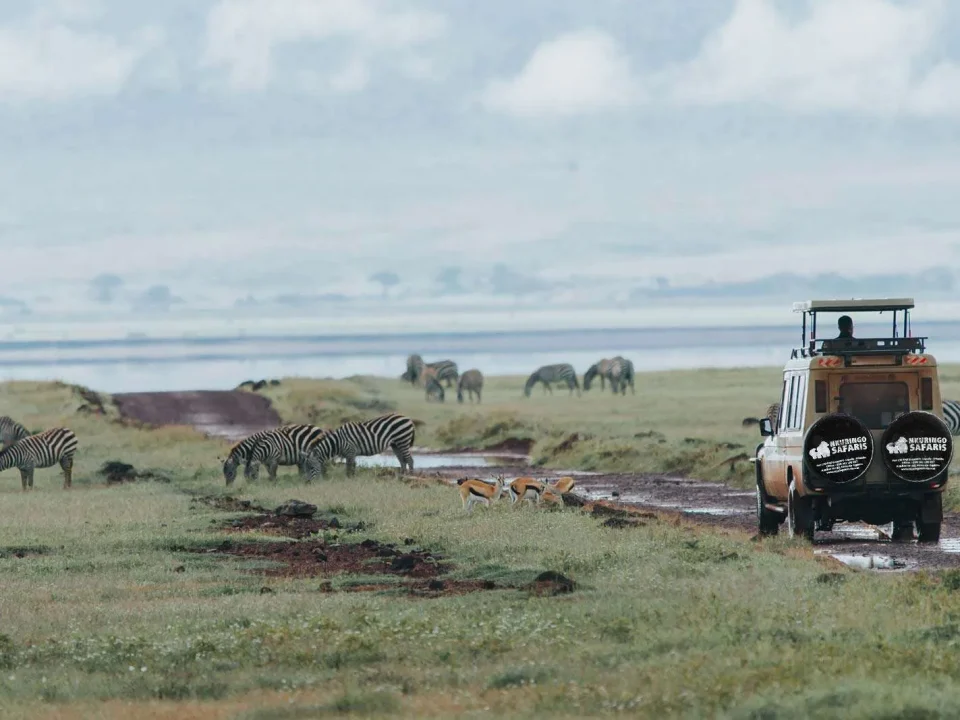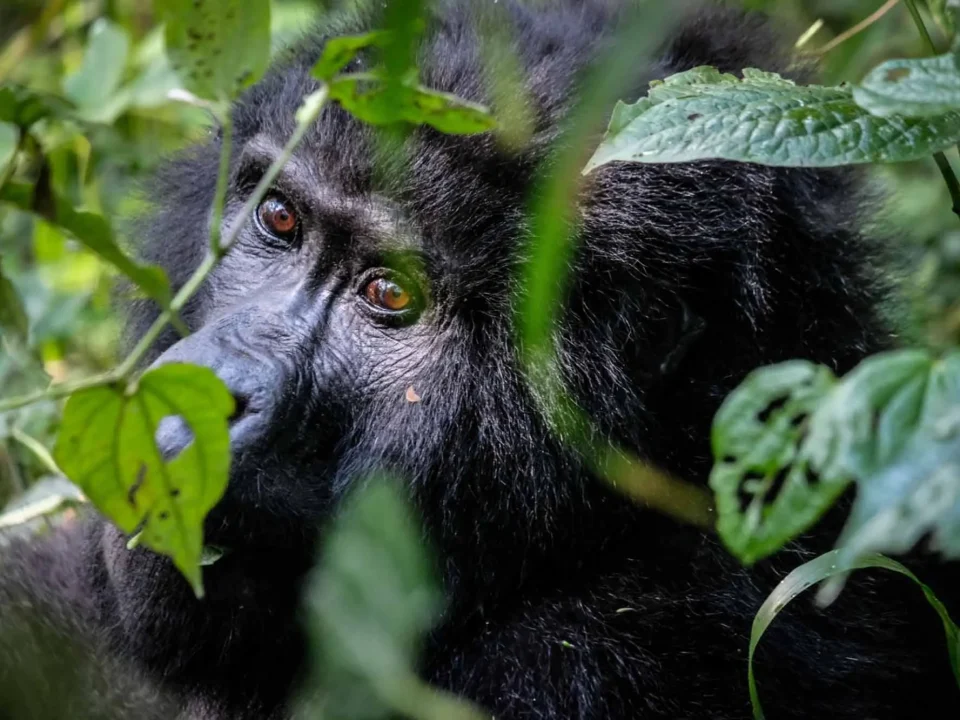
The Thrill of Discovery
May 27, 2025
The Best Time to Visit Victoria Falls
May 28, 2025The Greatest Wildebeest Migration in Tanzania and Kenya
Among the most spectacular natural phenomena on Earth, the Greatest Wildebeest Migration in Tanzania and Kenya is an epic wildlife spectacle that attracts safari enthusiasts, photographers, and nature lovers from across the globe. Each year, more than two million wildebeests embark on a challenging 1,800-mile journey across the vast Serengeti plains of Tanzania to the lush grasslands of Kenya’s Masai Mara National Reserve. This dramatic migration is often described as the world’s largest terrestrial mammal migration, and it remains one of the most breathtaking wildlife safari experiences on the planet.
This awe-inspiring movement of wildlife is driven by the animals’ search for fresh grazing pastures and reliable water sources. Alongside the wildebeests, hundreds of thousands of zebras, Grant’s gazelles, impalas, elands, and Thomson’s gazelles join the journey, creating a dynamic and bustling wildlife spectacle. This mass migration takes place across two renowned East African protected areas — Tanzania’s iconic Serengeti National Park and Kenya’s celebrated Masai Mara National Park — both of which are among the premier safari destinations in Africa.
The cyclical nature of the migration, following the rhythms of seasonal rains and grass growth, makes it possible to predict the movement of the herds with considerable accuracy. Star Wilderness Safaris offers expertly crafted migration safari packages that maximize your chance to witness key highlights such as dramatic river crossings, predator-prey interactions, and vast herds grazing across the plains. In this comprehensive safari overview, we will explore the patterns of the Greatest Wildebeest Migration in Tanzania and Kenya, the key wildlife species involved, the best times and locations to witness the migration, and the exceptional safari experiences available for travelers seeking a once-in-a-lifetime East African adventure.
The Magnitude of the Greatest Wildebeest Migration in Tanzania and Kenya
An Epic Journey of Millions of Wildebeests and Other Herbivores
The Greatest Wildebeest Migration in Tanzania and Kenya is an extraordinary annual event involving over two million wildebeests — one of Africa’s most iconic and resilient herbivores. These animals travel in vast, thunderous herds, covering approximately 1,800 miles (about 2,900 kilometers) in a continuous loop across the Serengeti ecosystem. The migration’s immense scale, both in terms of numbers and distance, is unmatched anywhere else on Earth.
Accompanying the wildebeests are hundreds of thousands of other herbivores, including over 200,000 zebras and tens of thousands of Grant’s gazelles, Thomson’s gazelles, elands, and impalas. These species migrate together because their needs for fresh grazing and water are closely linked. The interaction among these species forms a complex and vibrant ecological web, providing an unforgettable experience for anyone on a wildlife safari in the region.
The migration’s route includes the vast plains of Tanzania’s Serengeti National Park, famous for its rich wildlife diversity and iconic landscapes, before crossing into Kenya’s Masai Mara National Reserve — renowned for its rich cultural heritage and abundant predator populations. The migration is both a test of endurance for the animals and a spectacular natural drama to behold. Star Wilderness Safaris’ migration safaris are designed to position you in the best locations to observe this phenomenon in all its glory.
The Serengeti and Masai Mara: Two Great Parks, One Epic Migration
Central to the Greatest Wildebeest Migration in Tanzania and Kenya are the Serengeti and Masai Mara National Parks, two of Africa’s most celebrated wildlife sanctuaries. The Serengeti ecosystem, sprawling over 30,000 square kilometers, supports a vast array of wildlife, including the famous “Big Five,” and provides the initial grazing grounds for the migrating herds.
As the migration progresses, the wildebeests and their companions cross the border into the Masai Mara National Reserve in Kenya, a smaller yet equally vital protected area of about 1,500 square kilometers. The Mara’s verdant grasslands and plentiful rivers attract the migrating herds from July to October, a period widely regarded as the best time for witnessing dramatic river crossings.
The transition between these two parks is a critical and dangerous phase of the migration. The herds must navigate treacherous river crossings, including the Mara River, where crocodiles lie in wait. This is one of the most iconic and adrenaline-filled moments in any migration safari and a prime attraction for visitors.
Star Wilderness Safaris offers expertly guided tours that ensure you experience these intense moments safely while learning about the ecological importance of the migration and the predator-prey dynamics that keep the ecosystem balanced.
Understanding the Migration Patterns: Seasonal Movements and Key Moments
Following the Rhythm of the Rains and Grass Growth
The Greatest Wildebeest Migration in Tanzania and Kenya follows a well-established seasonal pattern closely tied to the annual rainfall cycles and the resulting growth of nutritious grasses. This cyclical movement ensures that the herds continuously access fresh grazing areas while avoiding drought and food scarcity.
The migration typically begins in December and January in the southern Serengeti, where wildebeests give birth to nearly half a million calves in a short window. This “calving season” is crucial for population growth and draws predators who capitalize on the vulnerability of newborns.
From there, the herds gradually move northwest towards the Western Corridor of the Serengeti and eventually reach the northern Serengeti plains around May to June. This phase is often characterized by large gatherings and intense grazing activity, with many predators in pursuit.
By July through October, the herds cross into Kenya’s Masai Mara National Reserve in search of greener pastures and water, marking the climax of the migration with dramatic river crossings. From November, the migration returns southwards into the Serengeti, completing the circuit.
Star Wilderness Safaris carefully plans migration safaris to coincide with these key phases, allowing travelers to witness specific events such as the calving season or river crossings, depending on their interests.
Iconic Wildlife Interactions During the Migration
The Greatest Wildebeest Migration in Tanzania and Kenya is not just about movement but also about the interactions between animals, predators, and their environment. Predators such as lions, leopards, cheetahs, hyenas, and crocodiles follow the migrating herds, creating a dynamic and sometimes brutal food chain spectacle.
During the river crossings, crocodiles ambush wildebeests, creating one of the most dramatic scenes in the natural world. On land, lions and hyenas attempt to isolate and hunt the weaker individuals from the herds. These predator-prey interactions are a vital part of the ecosystem and a major highlight for wildlife photographers and safari guests.
Moreover, the migration sustains many scavengers like vultures and jackals, while the sheer density of animals affects the landscape’s vegetation and water availability, shaping the Serengeti-Mara ecosystem profoundly.
Star Wilderness Safaris provides knowledgeable guides who explain these ecological relationships, enhancing the safari experience by connecting guests to the deeper natural processes behind the spectacle.
Combining Migration Safari with Cultural Experiences and Other Wildlife Tours
Engaging with the Maasai People and Cultural Heritage
Beyond the wildlife, the Greatest Wildebeest Migration in Tanzania and Kenya offers travelers a chance to engage with the rich cultures of East Africa, especially the Maasai people of Kenya and Tanzania. The Maasai are a semi-nomadic pastoralist community renowned for their colorful dress, traditional dances, and deep connection to the land.
Many migration safaris include cultural visits to Maasai villages, where travelers learn about Maasai customs, crafts, and their unique relationship with wildlife conservation. These interactions provide a meaningful context to the migration, highlighting the coexistence of humans and wildlife in the Serengeti-Mara ecosystem.
Star Wilderness Safaris emphasizes responsible and respectful cultural tourism, ensuring that these experiences benefit local communities and enrich your safari journey.
Extending Your Adventure: Combining Migration Safari with Rwanda and Uganda Tours
For travelers seeking to deepen their East African wildlife experience, Star Wilderness Safaris offers the exciting opportunity to combine the Greatest Wildebeest Migration in Tanzania and Kenya with gorilla trekking safaris in Uganda or Rwanda.
Uganda Gorilla Trekking and Gorilla Trekking Rwanda provide an extraordinary complement to the migration safari, allowing you to encounter the rare mountain gorillas in Bwindi Impenetrable Forest or Volcanoes National Park. These primate trekking experiences contrast beautifully with the open plains wildlife of the Serengeti and Masai Mara, offering a diverse and unforgettable safari adventure.
Combining these tours involves seamless travel arrangements and expert guidance, making it easy for travelers to experience East Africa’s premier wildlife spectacles in one trip. Whether it is a multi-country safari or a focused migration and primate encounter, Star Wilderness Safaris crafts tailor-made itineraries to suit every traveler’s dream.
Conclusion: Experience the Greatest Wildebeest Migration in Tanzania and Kenya with Star Wilderness Safaris
The Greatest Wildebeest Migration in Tanzania and Kenya is truly one of the world’s most breathtaking wildlife spectacles and an essential experience for any wildlife enthusiast. The annual journey of millions of wildebeests, zebras, and gazelles across the Serengeti and Masai Mara ecosystems offers unparalleled opportunities for wildlife viewing, photography, and experiencing the raw power of nature.
With expertly planned migration safaris, knowledgeable guides, and a commitment to responsible tourism, Star Wilderness Safaris invites you to witness this epic journey while also exploring cultural experiences and complementary wildlife safaris such as gorilla trekking in Uganda or Rwanda.
Book your migration safari today with Star Wilderness Safaris and immerse yourself in the grandeur of East Africa’s natural wonders, creating memories that will last a lifetime.




